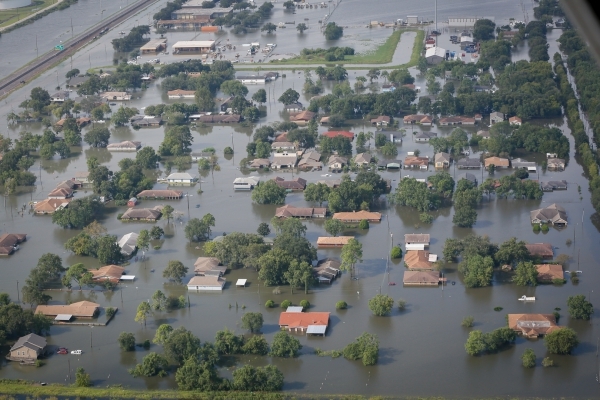BRATTLEBORO — In its Aug. 28 issue, The New York Times emphasized that with mega-storms such as Harvey, there is a link that has been well-established by scientists between rising temperatures (especially ocean temperatures), evaporation, and extreme rainfall.
While acknowledging that the connection between Harvey and climate change is not conclusive, the Times goes on to note that “it is clear that rising global temperatures warm the oceans, which causes more water to evaporate into the atmosphere. The buildup of moisture in turn contributes to the global increase in extreme rainfall. Storms are growing wetter thanks to climate change.”
The relevance of this to all of us is found in a draft of a major report about climate change awaiting the approval of the Trump administration.
That report has forecast that “warmer temperatures, higher seas, and greater amounts of rain and snow than federal scientists forecast only three years ago” will increasingly characterize our region.
According to the report (which has already been dismissed by the White House as “very disappointing”), if little is done to cut the rise in emissions, average annual temperatures in the Northeast could rise between 5.3 and 9.1 degrees Fahrenheit by 2071.
This warning was sounded earlier in the year through a report by scientists at the University of Massachusetts in Amherst. In a statement about the research, Professor Raymond Bradley of the Northeast Climate Science Center said the work demonstrated not only that “the northeast United States is one of those regions where warming will proceed very rapidly,” one that will experience “fiercer hurricanes and more flooding, with all of the related ecological, hydrological and agricultural consequences.”
The point here is that - unlike Houston, which did not initiate measures that their leaders were aware of and that could have at least mitigated Harvey's horrific impact - we can prepare for these eventualities, especially where it counts the most: in our neighborhoods and communities when people are on their own.
Yes, what we devise will not be foolproof if we are pitted against a catastrophic weather event, but coming together to plan, organize, and be vigilant for our mutual safety is far superior to just letting these storms happen to us, as if we didn't know any better.
We do know better, thanks to Katrina, Sandy, and now Harvey. We can choose to act - now.
* * *
In that vein, I have been in touch with the Vermont Emergency Management office to request that they provide a speaker and presentation for folks in our area as to how we can best prepare ourselves - individually and collectively - for a Harvey-type event, where people need to be rescued, are without food or water for days, and who face massive destruction to both infrastructure and personal property that may require months or years to repair.
If successful (and so far, I have received the kind of positive response from VEM one would hope for), date, time, and place information for such a presentation will appear in the local media.
In the meantime, keep your eye on Irma which is boiling away out in the Atlantic right now, and begin to prepare for her and for the storms that will inevitably follow as best you can with your family, neighbors, and friends.
There is no substitute for self- and community-sufficiency; the collaboration of proactive people is the ultimate safeguard against the new weather normal we have entered.
